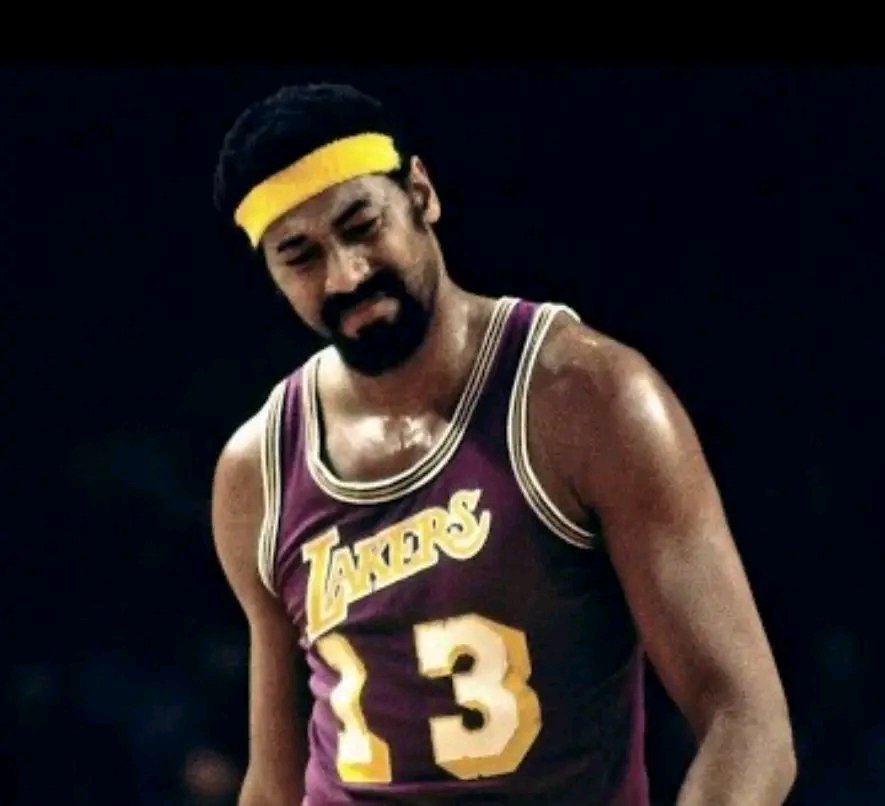Too Tall, Too Strong: How Wilt’s ‘Goaltending Dunk’ Forced the NBA to Act
The NBA has always been a league shaped by its most dominant players, but no one forced the rulebook to evolve quite like Wilt Chamberlain. At 7’1″ with a 48-inch vertical leap, Chamberlain wasn’t just a basketball player—he was a physical anomaly who exposed the game’s structural limitations. While his 100-point game and 50-point season averages remain legendary, one of his most disruptive innovations has been largely forgotten: the “goaltending dunk,” an unstoppable free-throw technique so unfair that the league had no choice but to ban it outright. This wasn’t just a quirk of basketball history; it was a moment when the sport’s governing body realized that Chamberlain’s physical gifts could break the game itself.
The move was as simple as it was unguardable. During free throws, Chamberlain would take a running start from behind the line, leap toward the rim, and—instead of shooting—extend his arm over the cylinder to gently drop the ball in with his fingertips. In essence, he was dunking from the free-throw line. Today, this would be called offensive goaltending, but in the early 1960s, the rulebook had no language to prevent it. Traditional free throws were designed as stationary shots, a test of focus and technique under pressure. Chamberlain’s method rendered those principles obsolete. For him, a free throw became a formality—an uncontested two points that no defender could challenge without violating the rules themselves.
The implications were staggering. Basketball relies on competitive balance, and free throws are supposed to be the great equalizer—a way to punish fouls without guaranteeing points. But Chamberlain’s dunk removed all risk. If he shot 50% on conventional free throws (which he often did), this move would effectively double his efficiency at the line overnight. Defenses would be forced to avoid fouling him entirely, distorting the fundamental strategies of the game. The NBA, which had already widened the lane in 1951 (the “Wilt Chamberlain Rule”) to limit his dominance near the basket, now faced a new problem: a player who could exploit the free throw, one of basketball’s most sacred rituals, as a guaranteed scoring opportunity.
The league acted swiftly. In 1967, the NBA officially outlawed Chamberlain’s tactic by amending Rule 5, Section I, which governs free throws. The new language prohibited players from crossing the free-throw line before the ball hit the rim and banned any attempt to touch the ball above the cylinder during a free throw. The change was framed as a clarification, but everyone knew its true purpose: to stop Wilt from turning a 15-foot set shot into a layup. This wasn’t the first time the NBA had adjusted its rules to contain Chamberlain, and it wouldn’t be the last. His sheer physicality had already forced changes to inbounding rules and defensive positioning. But the free-throw dunk ban was different—it wasn’t about limiting his dominance in the flow of play; it was about preventing him from rewriting the rules of basketball’s most fundamental play.
What’s fascinating is that Chamberlain rarely used the move in games. By most accounts, he deployed it sparingly, perhaps aware that overuse would prompt a rule change. But its mere existence was enough to terrify the league. Imagine the psychological impact on opponents: knowing that the most unstoppable scorer in history could, at any moment, decide to remove the one remaining obstacle to his efficiency. The dunk wasn’t just a trick—it was a looming threat, a reminder that Chamberlain’s physical gifts were so far beyond the norm that the game itself might not be able to contain them.
This episode reflects a broader truth about Chamberlain’s career. Unlike Michael Jordan, who elevated the NBA’s popularity, or Bill Russell, who embodied team success, Wilt was often seen as a problem to be solved. His stats were so absurd—averaging 48.5 minutes per game in a season, grabbing 55 rebounds in a single night—that they seemed to defy logic. The league responded not with celebration, but with regulation. The free-throw dunk ban was just one of many examples: the lane was widened to keep him farther from the rim; goaltending rules were tightened to limit his shot-blocking; even the introduction of the offensive goaltending rule in 1958 was indirectly a response to his ability to tap in misses at will.
Today, Chamberlain’s free-throw dunk exists as a footnote, a quirky “what if” in basketball history. But its legacy is profound. It underscores how Chamberlain’s physicality forced the NBA to confront the limits of its own design. Modern fans debate whether players like Giannis Antetokounmpo or Victor Wembanyama would dominate in past eras, but Chamberlain’s career poses the opposite question: Could today’s NBA handle *him*? Given how often the league had to rewrite its rules just to keep him in check, the answer might be no.
In the end, the story of Wilt’s banned dunk isn’t just about a loophole or a rule change. It’s about a player so transcendent that the sport had to evolve around him. The NBA didn’t just adapt to Wilt Chamberlain—it adapted *because* of him. And while the dunk itself is lost to history, its lesson remains: greatness doesn’t just play by the rules. Sometimes, it rewrites them.





